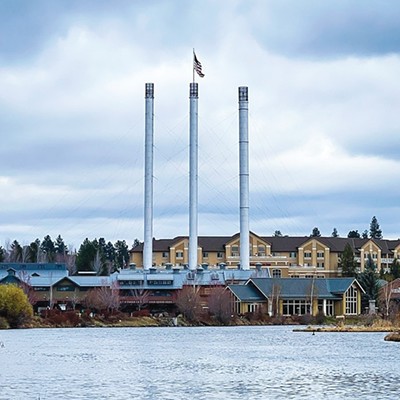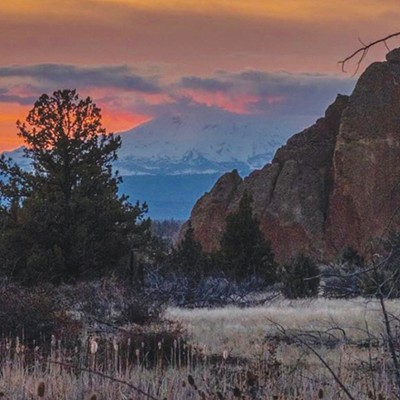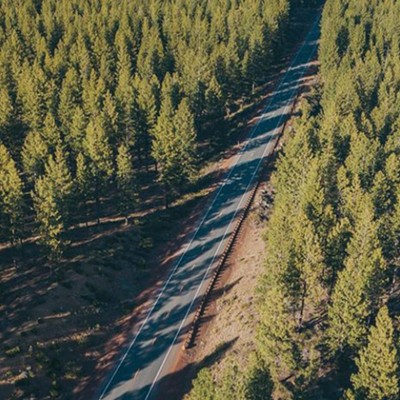Secretary Sally Jewell Outlines a Conservation Agenda to Protect Oregon's Parks and Public Lands
Dear Editor,
After a sixteen-day closure of Crater Lake National Park, due to the government shutdown, last week Department of Interior Secretary Sally Jewell, who oversees our national parks, monuments and wildlife refuges, made a public commitment to get our parks and public lands the resources they need and the protection they deserve.
Our national parks and public lands are more popular than ever, with millions of Americans planning family vacations to places from Crater Lake National Park to Oregon Caves National Monument. Yet increased pressure from logging, mining and drilling companies is stripping our parks of the resources they need and the protection they deserve.
Over the past two years, Congress has cut our parks budget by over 10 percent, attempted to zero out critical conservation programs, and stalled dozens of lands protection bills – failing to protect a single new acre of wilderness in the last three years.
That's why I was happy to hear Secretary Jewell layout a strong conservation agenda. I look forward to working hand-in-hand with Secretary Jewell, President Obama and Senators Wyden and Merkley to keep Oregon's public lands protected by restoring our national parks funding, fully funding the Land and Water Conservation Fund, our nation's premier conservation program, and ensuring special places like the Cascade-Siskiyou National Monument gets the protection it deserves.
As an advocate of our national parks and public lands, I would love to see a Congress that's more supportive of what writer Wallace Stegner called "America's best idea." However, we can't afford to wait. That's why I'm excited to work with President Obama and Secretary Sally Jewell to do everything in their power to protect and invest in Oregon's special places.
—Rikki Seguin, Preservation Advocate, Enviornment Oregon
Save a cat! Or Two!
Several weeks ago, we were alerted to a colony of cats in the Redmond area. The colony is located at a rental property on a small acreage tract east of town. The tenants informed us that they had moved into the house a couple of months previous and had been caring for the cats as best they could. They estimated that there are 30 or more cats on the property and they were becoming increasingly overwhelmed.
When we arrived at the property, it was apparent there were far more than 30 cats. At the rustle of a cat food bag and a kitty kitty call from the tenant, cats came running from all directions. There were dozens upon dozens of cats, and ready for a bite of the food.
Last week the tenant informed us that the property had been sold and they were given notice to be moved by Christmas. Not knowing how this colony would fare without these caring people, I contacted the realtor who had the property listed. He informed me that the buyer did not intend to occupy this property and, in the realtor's opinion, the buyer would likely exterminate this colony.
These cats are feral; however, they have had substantial human contact. There are Sylvestors, beautiful grays, blacks and calicos. Many are approachable and friendly, some are more aloof. None deserve to be killed for the new property owner's convenience.
Time is short. I know there are homes for many, even if in the role of barn cat. Please contact me at [email protected]
Thank you!
—Jerry Gilmour, volunteer, Bend Spay and Neuter Project
In reply to "Build It, and They Will Ride," (Boot, 10/31)
Hello folks and TSW,
I work for Central Oregon Intergovernmental Council, the organization that manages Cascade East Transit, and I am staffing the regional Transit Funding Committee, which is grappling with transit funding right now. I'd like to share a few comments:
First, there are several planning process under way right now aimed at addressing the transportation impacts of the new campus. All of these processes will have public engagement elements, so the broader community and nearby neighborhoods will have opportunities to get involved. The university and City have both mobilized resources to a) ID impacts, b) engage the community, and c) develop innovative and "made in Bend" tools to meet needs, including transit service enhancements but also bike/ped and other "transportation demand management" improvements. The challenge is that the timing is tight, but all the partners that I work with are committed and "get it" that this is extremely important work to be doing at this time. I strongly encourage anyone interested in this to keep an eye out for public meetings and other opportunities to get engaged.
Second, our work to date seems to indicate that there will not be an opportunity for a single solution to transit funding. It appears that a hybrid model is the most feasible, with cities helping to pay but also those entities that generate the most transit trips figuring out a way to chip in. There are plenty of models in other communities to guide this approach. And, if the needle of public opinion can be moved (through outreach, engagement, and further demonstration of the value of transit), at some point in the future the broader community will participate through funding measures like what the Source is suggesting.
Third, there is little appetite among Bend and regional leaders to propose a transit taxing measure in the short term due to the strong likelihood of failure as evidenced by the survey results, which showed less support for transit funding now than the results of the 2008 ballot measure.
If you are interested in finding out more about Cascades East Transit or the Transit Funding Committee's work, all of their agendas, materials, and minutes are posted here: coic2.org/coic-board-local-transit-funding-sub-committee/
—Scott Aycock
You can make the same argument about separate bicycle lanes (cycle tracks)—build it, and they will ride.
—lfreeman
In reply to "Bond, Park Bond," (News, 10/31)
How about some detail on the Pine Nursery park expansion/upgrades?
—EastParker
In reply to "Fact or Fiction," (Feature, 10/7)
Regarding the paragraphs on the health benefits of whisky, I must point out the following: though my favorite Friday at five beverage originated in Ireland, whisky only has an "e" in it if it is American or Irish. Canadian whisky, such as Pendleton or Crown Royal, does not have an "e" and neither does that true nectar of the gods: Scotch whisky.
Second point: it is easy to understand that in a town which defines culture as buttes, bikes, and brews, your writer mistakenly reported (first sentence) that whisky is brewed. In fact, it is distilled. Irish is distilled through water, while Scotch whisky is distilled through peat, explaining its distinctive smoky taste.
—Cody Yeager
Letter of the Week!
Cody—Thank you for the gentle chiding. It was about all that my whisky addled brain could handle. For helping straighten out our fiction from fact, please stop by to pick up a pair of tickets to the Tower Theatre's Rockumentary Film Club showing of "Jimi Hendrix Live at Woodstock," 7 pm, Nov. 25.



















